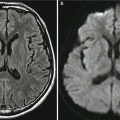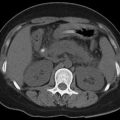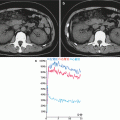Influenza virus A
Influenza virus B
Influenza virus C
Genome
8 gene segments
8 gene segments
7 gene segments
Structure
10 virus proteins, with M2 being characteristic
10 virus proteins, with NB being characteristic
9 virus proteins, with HEF being characteristic
Host
Humans, pigs, horses
Only humans
Humans and pigs
Virus variability
Antigenic drift and shift
Antigenic drift with multiple mutants prevailing
Antigenic drift with multiple mutants
Clinical features
Pandemic, with high mortality rate
Not pandemic
Mostly sporadic with slight symptoms
Influenza caused by H1N1 subtype, H2N2 subtype, H3N2 subtype of influenza A virus, and influenza B virus and influenza C virus is known as classical influenza. Apart from these viruses, influenza caused by other influenza viruses is known as a newly emerging influenza.
21.2 Epidemiology
21.2.1 General Introduction of Its Prevalence
As early as in the years of 412 BC, Hippocrates described a flu-like disease. But the first detailed description of influenza pandemic was in 1580. A total of 31 influenza pandemics have been recorded in documents, indicating periodic occurrence of influenza pandemics. Since the twentieth century, four global influenza pandemics have been recorded, respectively, in 1918, 1957, 1968, and 1977, all of which were caused by strains of influenza A virus.
21.2.2 Source of Infection
Patients with influenza and asymptomatic infected patients are the main sources of infection, whose infectivity lasts from the end of incubation period to the acute stage after onset. In the first 2–3 days after the onset, their infectivity is the strongest. When adults and elder children are sustaining seasonal influenza with no complications, virus excretion persists for 3–6 days in the respiratory secretions. Hospitalized adult patients can disseminate the viruses with pathogenicity for 1 week or longer after the onset. Studies have demonstrated that in infants and young children with influenza or human patients with influenza caused by avian H5N1 subtype of influenza A virus, long-term virus excretion is common, usually persisting for 1–3 weeks. In addition, patients with immunodeficiency such as patients with AIDS may also show a prolonged period of virus excretion.
21.2.3 Route of Transmission
Influenza mainly spreads via droplets in the air. The influenza virus exists in the respiratory secretions of symptomatic and asymptomatic patients. By talking, coughing, and sneezing, droplets or aerosols carrying the virus are disseminated into the air. The inhalation of the droplets or aerosols by a susceptible person can cause the infection. The virus can also spread via direct or indirect contact to mucosa of the mouth, nasal cavity, and eyes. Therefore, influenza has a strong infectivity, with rapid spreading and extensive prevalence. Its spreading speed is related to the population density.
21.2.4 Susceptible Population
Populations are generally susceptible and the susceptibility is not related to gender and occupation. Once cured, certain immunity can be acquired. The antibody can be firstly detected in 1 week after the infection, which peaks at weeks 2–3 after the infection and begins to decrease in 1–2 months. The antibody can be detected in the blood and secretions of nasal mucosa. No cross-immunity exists among influenza A, B, and C and among subtypes of influenza A. Influenza has a repeated onset and the acquired immunity after the infection only persists for a short period of time. Although antibody exists in the blood, the person can be reinfected by the same virus. The influenza virus is always subject to variance, and the highest incidence rate is found in the populations of young adults and adolescents.
After infection of influenza virus, the following populations are likely to develop into serious cases. Therefore, focused attention should be paid on such patients. Influenza virus-related tests and examinations should be performed as early as possible to effectively treat such patients. These populations include (1) women during pregnancy; (2) influenza patients with accompanying diseases or conditions as follows: chronic respiratory disease, cardiovascular disease (with hypertension excluded), hepatic or renal disease, blood disorder, neurological disease, neuromuscular disease, metabolic and endocrine diseases, immune suppression (including HIV infection and use of immunosuppressant), being attended in healthcare institutions, and long-term medication of aspirin under the age of 19 years; (3) obese population with a BMI above 30; (4) children under the age of 5 years (those under the age of 2 years are more likely to suffer from complications); and (5) the elderly above the age of 65 years.
21.2.5 Epidemic Features
Influenza occurs all year round. In the northern area of China, its incidence commonly peaks in winters and springs, while in the southern area of China, its incidence commonly peaks in summers and winters. Influenza A commonly occurs to cause outbreaks or even pandemics, with occurrence of a small-scale epidemic every 2–3 years. Based on the four pandemics of influenza, influenza A is likely to occur in pandemic every 10–15 years. Influenza B commonly occurs in outbreaks or small-scale epidemics and influenza C occurs sporadically. Influenza has a sudden onset and spreads rapidly. Its spreading peaks within 2–3 weeks and spontaneously terminates after 3–4 weeks. Its incidence rate is high but mortality rate is low. Its spreading is usually along the transportation lines, generally from urban to rural and from densely populated working places to scarcely populated resident communities.
21.3 Pathogenesis and Pathological Changes
21.3.1 Pathogenesis
Influenza virus causes damages to cells and cell atrophy via virus replication, with consequent occurrence of influenza. The loss of important cellular protein may lead to death of cells. The epithelial cells of the infected mucosa wrinkle and fold, with karyopyknosis, cilia loss, and shedding of mucosal columnar epithelium after infection.
In addition to the directly induced cellular death, influenza A and B viruses can induce apoptosis of infected cells. The mechanism underlying the apoptosis of infected cells induced by influenza viruses remains elusive, which is possibly related to Fas abnormality during virus replication.
21.3.2 Pathological Changes
After the initial infection, lesions may involve the trachea, bronchi, and lower respiratory tract. In the cases of simplex acute influenza, extensive inflammatory changes, mucosal lesions, and edema occur in the larynx, trachea, and bronchi. Biopsy demonstrates vacuolar degeneration of bronchial mucosa columnar epithelial cells, loss of cells, and even extensive shedding which involves basilar cells, shedding of ciliated cells, and metaplasia of epithelial cells. Antigen of influenza virus can be detected in surface layer of epithelial cells. There are congestion and edema of lamina propria mucosa cells with accompanying infiltrations of lymphocytes and monocytes that persist for more than 2–3 days. Subsequently, the undifferentiated basilar cells regenerate. With the conditions improved, the layer of epithelial cells can recover through rapid regeneration and metaplasia.
In fatal influenza-related viral pneumonia, the gross pathological changes include bleeding, severe tracheobronchitis, and pneumonia. The lesions are characterized by extensive bronchial and bronchiolar cell necrosis, with accompanying shedding of ciliated epithelial cells, fibrin exudation, inflammatory cell infiltration, hyaline membrane formation, congestion of alveolar and bronchial epithelial cells, interstitial edema, and mononuclear cell infiltration. The later changes also include diffuse alveolar damage, lymphocytic alveolitis, metaplastic regeneration of epithelial cells, or even extensive fibrosis of lung tissues. By autopsy, extensive necrotic tracheobronchitis can be found, with accompanying ulceration and tracheal mucosal shedding and necrosis. Above 1/3 of the cases have diffuse brain tissue hyperemia and edema, myocardial cell swelling, interstitial hemorrhage, lymphocytic infiltration, necrosis, and other inflammations.
21.4 Symptoms and Signs
The incubation period commonly lasts for 13 days and sometimes only for several hours. Its onset is sudden and acute, with mainly systemic toxic symptoms. The respiratory tract symptoms are slight or not obvious. According to the clinical manifestations, influenza can be divided into the following types:
21.4.1 Simplex Influenza
It is the most commonly found influenza, with sudden onset and symptoms of aversion to cold and high fever. The body temperature can be up to 39–40 °C. Fever is the most important initial symptom, commonly with accompanying headache, systemic muscular and joint soreness and pain, fatigue, poor appetite, and other toxic symptoms, whose severity is related to the degree of fever. Commonly, fever in patients with influenza is persistently high, typically for 3 days. Some patients may experience photophobia and lacrimation. And other symptoms including nasal obstruction, runny nose, sore throat, coarse voice, and other respiratory tract symptoms can be found at the onset. After the body temperature returns to normal, the systemic symptoms are improved, but with increasingly obvious respiratory symptoms. Coughing and physical strength commonly require 1–2 weeks to return back to normal. By physical examination in the acute stage, the patients have an acute complexion, with flushing on the face, mild conjunctival congestion, as well as damp and warm skin. In some patients with pharyngeal congestion, oral mucosal herpes may occur.
21.4.2 Pneumonic Influenza (Primary Influenza-Related Viral Pneumonia)
Pneumonic influenza can be either primary or secondary to simplex influenza. The occurrence of pneumonic influenza is the result of influenza virus infection spreading from the upper respiratory tract downward to the lower respiratory tract, which is more common in the elderly, children, patients with primary cardiopulmonary disease (especially rheumatic heart disease and left atrioventricular valvular stenosis), women in pregnancy, and populations with immunodeficiency. But in up to half of the cases, no underlying disease is reported. The manifestations of typical pneumonic influenza include high fever that persists for a long period of time, rapid occurrence of dyspnea, cyanosis, severe cough, foamy thick sputum or purulent sputum, and bloody sputum. By physical examination, breathing sounds of both lungs are low, with moist rales. Generally, the course of the disease lasts for 3–4 weeks. Antibacterial therapies have no therapeutic efficacy. Death may occur due to heart failure or respiratory and circulatory failure and pneumonic influenza has a high mortality rate.
21.4.3 Toxic Influenza
Toxic influenza is extremely rare, which is caused by invasion of influenza virus into the central nervous system and cardiovascular system, with manifestations of toxic symptoms. Clinically, the symptoms are characterized by encephalitis or meningitis, including high fever, coma, delirium, and convulsion. Some serious symptoms may be found such as cerebral meningeal irritation and disseminated intravascular coagulation. Toxic influenza has a high mortality rate.
21.4.4 Gastrointestinal Influenza
Gastrointestinal influenza is common in children, with typical symptoms of nausea, vomiting, diarrhea, and abdominal pain. Generally, it can be cured within 2–3 days.
21.4.5 Manifestations in Special Populations
Influenza prevailing in different populations is characterized by different clinical manifestations. The main manifestations of influenza in special populations are described as the following:
21.4.5.1 Children
During the flu-prevailing seasons, more than 40 % of preschoolers and 30 % of school-aged children sustain influenza. Influenza in common healthy children is mild, with symptoms of fever, cough, runny nose, nasal obstruction, sore throat, and headache. In some rare cases, muscular pain, vomiting, and diarrhea occur. Influenza in infants and young children commonly has atypical clinical symptoms, with possible occurrence of high fever and convulsion. Neonatal influenza is rare but its occurrence is commonly complicated by pneumonia. In addition, neonatal influenza commonly has septicemic manifestations including drowsiness, feeding refusal, and apnea. In young children, influenza-induced laryngitis, tracheitis, bronchitis, bronchiolitis, pneumonia, and gastrointestinal symptoms are more common than in adults.
21.4.5.2 The Elderly
The elderly influenza refers to infection of influenza by elderly population aged above 65 years. Because this population commonly has primary respiratory or cardiovascular disease, the conditions of the elderly influenza are commonly serious, with rapid development. The possibility of pneumonia in the elderly patients with influenza is higher than that in the adult patients with influenza. In this population, influenza may involve other systems to cause influenza-related viral myocarditis and influenza-related viral encephalitis.
21.4.5.3 Women in Pregnancy
In addition to fever and cough, women infected by influenza virus in middle and late stages of pregnancy are susceptible to pneumonia. The conditions rapidly progress into dyspnea, hypoxemia, and even acute respiratory distress syndrome (ARDS). Subsequently, miscarriage, premature birth, intrauterine fetal distress, and death may occur. Infection of influenza in middle and late stages of pregnancy can induce aggravation of the basic disease. In some serious cases, death may occur in 2 days after the onset; antiviral therapy should be administered. Otherwise, delayed treatment obviously increases the mortality rate.
21.4.5.4 Population with Immunodeficiency
Immunodeficient individuals, such as recipients of organ transplantation, patients with HIV/AIDS, and long-term users of immunosuppressants, are at a significantly higher risk of severe influenza once infected. They are predisposed to influenza-related viral pneumonia and may experience rapid onset of fever, cough, dyspnea, and cyanosis, with a high mortality rate.
21.5 Influenza-Related Complications
21.5.1 Bacterial Pneumonia
The incidence rate of bacterial pneumonia in patients with influenza has been reported to be 5–15 %. Its common pathogens include Streptococcus pneumoniae and Staphylococcus aureus, especially methicillin-resistant Staphylococcus aureus (MRSA). The susceptible populations include the elderly and individuals with chronic pulmonary disease or heart disease.
21.5.2 Pneumonia Caused by Other Pathogenic Organisms
Other pathogenic organisms inducing pneumonia in patients with influenza include chlamydia, mycoplasma, Legionella pneumophila, and fungi (Aspergillus). When influenza complicated by pneumonia is ineffectively treated by routine anti-infective therapies, it is likely to be caused by these pathogens.
21.5.3 Reye Syndrome
It is a disease of the liver and central nervous system complicating influenza A and B. And Reye syndrome also occurs in patients with herpes zoster virus infection. Reye syndrome is commonly found in children under the age of 14 years, especially those using aspirin or other analgesic and antipyretic agents containing salicylic acid. Reye syndrome is rarely found in adult patients with influenza.
21.5.4 Other Complications
Other complications include myositis that commonly occurs in children and rarely occurring myoglobinuria and renal failure, myocardial lesions, encephalitis, and meningitis. Myositis is characterized by pain and tenderness of the gastrocnemius and soleus muscle, possible convulsion of lower limbs, and even inability in walking in serious cases. Myositis more commonly complicates influenza B, with a temporary increase in serum creatine phosphokinase level that generally returns to normal in 3–4 days.
Stay updated, free articles. Join our Telegram channel

Full access? Get Clinical Tree






